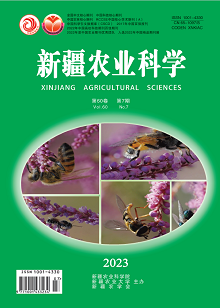【Objective】 To provide theoretical basis for precision water-saving irrigation and yield increase of Eggplant in Northern China.【Methods】 The eggplant variety Qieza 2 was taken as the research object, based on the field capacity, five treatments were set respectively:W1:soil water content of 50% - 55% FC, W2:soil water content of 60% - 65% FC, W3:soil water content of 70% - 75% FC, W4:soil water content of 80% - 85% FC, W5:soil water content of 90% - 95% FC, and each treatment was repeated three times.After that, the effects of five different soil moisture on growth, yield, quality and water use efficiency of greenhouse eggplant were studied.【Results】 Under different soil moisture conditions, the plant height and stem diameter of protected eggplant increased first and then decreased with the increase of soil moisture; Under the experimental conditions, the relationship between eggplant yield and irrigation was a quadratic function, y(Y) = -3.202,1x2 + 1,278.5x - 26,511(R2 = 0.994,3).The yield of W4 treatment was the highest, which was 101,029.91 kg/hm2; Reducing soil water content was conducive to the increase of soluble solid, soluble sugar, vitamin C and soluble protein, and also led to the increase of nitrate content; The water use efficiency of protected eggplant increased with the decrease of soil water content.The water use efficiency of W4 treatment with the highest yield was 36.22 kg/m3, decreased by 13.14% compared with W1 treatment, but the yield increased by 54.55%.【Conclusion】 Under the experimental conditions, when the soil water content is 80% - 85% FC, the eggplant yield reaches the maximum, which is 101,029.91 kg/hm2, the nitrite content is the lowest, which is 575.40 mg/kg, and the water use efficiency is relatively high, which is 36.22 kg/m3.It is the most suitable facility eggplant soil water management in Northern China.

